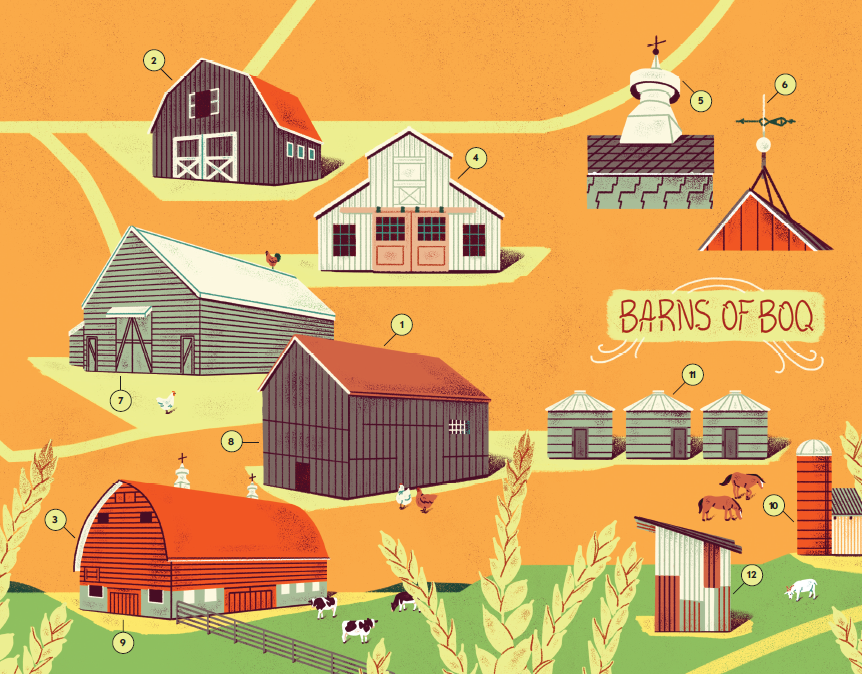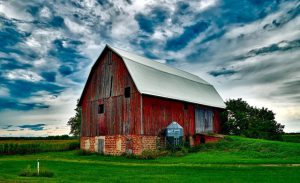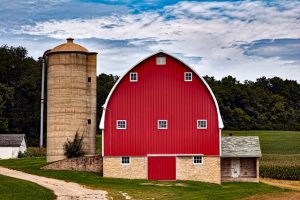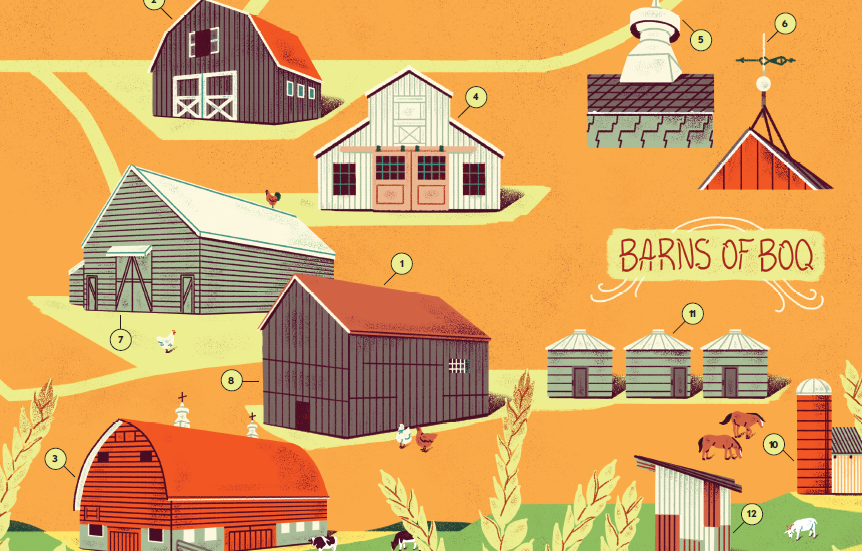Lost in the maize of farms in the region? Wonder why barns look they way they do? Here’s a guide to use on your next drive exploring barns in the Bay of Quinte.

Barns in Bay of Quinte
Roof Styles
 1 Gable A simple roof with two sloping sides, it’s the earliest style of roof seen on barns. Initially, they were very steep.
1 Gable A simple roof with two sloping sides, it’s the earliest style of roof seen on barns. Initially, they were very steep.
2 Gambrel This style of roof increased in popularity in the late 19th century as herd sizes grew and feed storage required more room.
3 Gothic Sometimes extending right to the ground, these arched roofs create a hayloft free of obstructing supports (making them easier to fill with feed and reducing labour costs).
4 Monitor Also called a “raised centre aisle” or “RCA”, this higher roofline offers more natural light and ventilation than a basic gable.
Accessories
5 Cupolas A small tower or dome-like feature projecting from the top of a barn, it provides ventilation for the steam of manure and the hot breath of livestock (now you know!).
6 Lightning Rods Tall, made of timber and full of hay, barns are easy targets with a high risk of fire. Lightning rods offer protection from strikes.
Main Types of Barns
7 Dutch barns feature low side walls and a steeply pitched roof, with wagon doors on their gable ends (under the peak). They’re often nearly square.
8 English barns, also known as three-bay barns, are a common style with tall walls and wagon doors on their long sides. They’re rectangular in shape.
9 Basement barn foundations are made of stone, and are often used for dairy farming (with a convenient ramp up to the wagon doors). When they’re set into a hillside, they’re called Bank Barns.
Supporting Structures
 10 Silos These tall, round buildings dotting the horizon are handy landmarks for identifying older dairy farms; they were used to store and preserve large quantities of feed.
10 Silos These tall, round buildings dotting the horizon are handy landmarks for identifying older dairy farms; they were used to store and preserve large quantities of feed.
11 Grain Bins Much shorter than silos, these round or square facilities are used as storage for grain.
12 Sheds A small construction with only three walls, these lean-tos or freestanding buildings are easy and inexpensive shelters.
Be sure to check out our events calendar, follow us on Facebook, Instagram and Twitter and sign up for our newsletter for more of what happens here in the BoQ.








